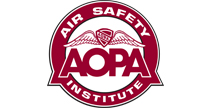No room to maneuver
CEN11FA428
 By David Jack Kenny
By David Jack Kenny
It’s easy to get into the habit of thinking of thunderstorms chiefly as a hazard of cruise flight. Training and equipment are devoted to identifying storms in time to avoid flying into them, whether they’re embedded cells or that deceptive gap that’s just waiting to close up around you. But thunderstorms can pose even greater threats at low altitudes, where there’s no room to ride out gust fronts or downdrafts powerful enough to overwhelm an aircraft’s maximum rate of climb.
A little before 2:30 p.m. on June 29, 2011, a retractable-gear Cessna R182 took off from Colorado’s Front Range Airport just east of Denver. Its pilot operated an aerial photography business, having learned to take pictures while flying solo. He had come down from Marshfield, Wis., about a week earlier to photograph some residential and commercial real estate. Witnesses saw the Cessna maneuvering low over the city of Thornton, circling intersections and following streets. At the moment a sudden strong wind hit the surface, the airplane’s wings began to wobble; then it banked hard to the left, crashed into dry prairie grass near a horse corral, and exploded. The resulting fire almost completely consumed the airplane. Radar track data confirmed that it never climbed more than 1,500 feet above the ground during the flight; when it disappeared from radar, it was just 500 feet agl.
There’s no record of what the 41-year-old commercial pilot knew about that day’s forecast or where he might have learned it. A quick review of data on the Internet probably wouldn’t have raised many concerns. The terminal forecast closest to the accident site, from Rocky Mountain Metropolitan, predicted thunderstorms in the vicinity with winds gusting up to 35 knots, but not until after 4 p.m. The area forecast merely called for the development of isolated thunderstorms and rain, and when he took off the weather didn’t look especially threatening—southeast winds at 9 knots with 10 miles visibility and a scattered layer at 8,000 feet agl. But at Rocky Mountain, less than 30 nautical miles away, the winds were from the northwest at 10, one sign of instability.
It’s hardly unusual for an experienced pilot to make a local flight without bothering to get a formal weather briefing. Sometimes it’s still a good idea, though, particularly when dealing with an unfamiliar climate or topography. The meteorology report prepared for the NTSB’s investigation noted that with mountains to the west, “ … a surface wind from the south and east would have given the surface winds an upslope component near the accident site. Along with the lifting mechanism provided by the position of the low and trough … the environment surrounding the accident site was conducive for the formation of showers and thunderstorms.” A Wisconsin-based pilot might be less familiar with that mechanism. At 10:38 a.m., the National Weather Service had issued a hazardous weather outlook predicting showers and thunderstorms during the afternoon with gusts up to 50 miles per hour. Less than two hours later, the service’s area forecast discussion for eastern Colorado warned that gusts of 35 knots were likely and stronger gusts possible in the vicinity of any storms. A meteorological impact statement for the area served by the Denver Air Route Traffic Control Center advised that “the low-level wind shear and microburst potential between 1300 and 1800 was moderate to high.”
The last radar contact with the Skylane came at 3:22 p.m. The two previous METARs at Rocky Mountain Metropolitan had reported virga to the northwest; during the interval in which the accident occurred, the wind switched from 10 knots out of the northwest to 20 knots from the south, gusting to 31. Twenty-six minutes after the accident, Denver International Airport recorded a 42-knot south wind with gusts up to 63 knots and squalls. Satellite and radar images both suggested there was convection without much precipitation near the accident site. Doppler radar showed winds in excess of 60 knots swirling around the vicinity, leading the NTSB meteorologists to conclude that the airplane had been caught in a dry microburst. Severe turbulence made the airplane uncontrollable at an altitude too low to permit recovery.
Neither the radar track nor the witness accounts suggest that the pilot made any attempt to escape the weather, which might mean he wasn’t aware of it. Maneuvering the airplane into position for the shot while watching out for obstacles would have kept his attention on the ground. Quite possibly he never knew what hit him.